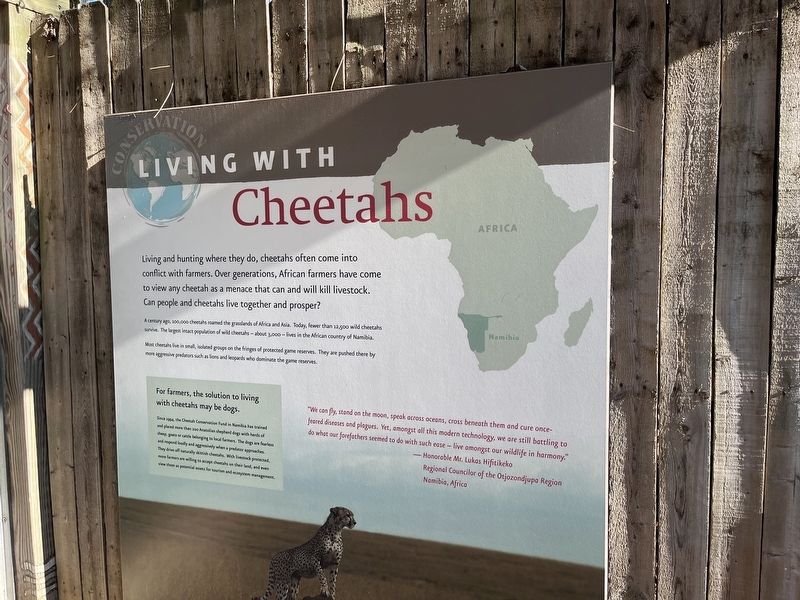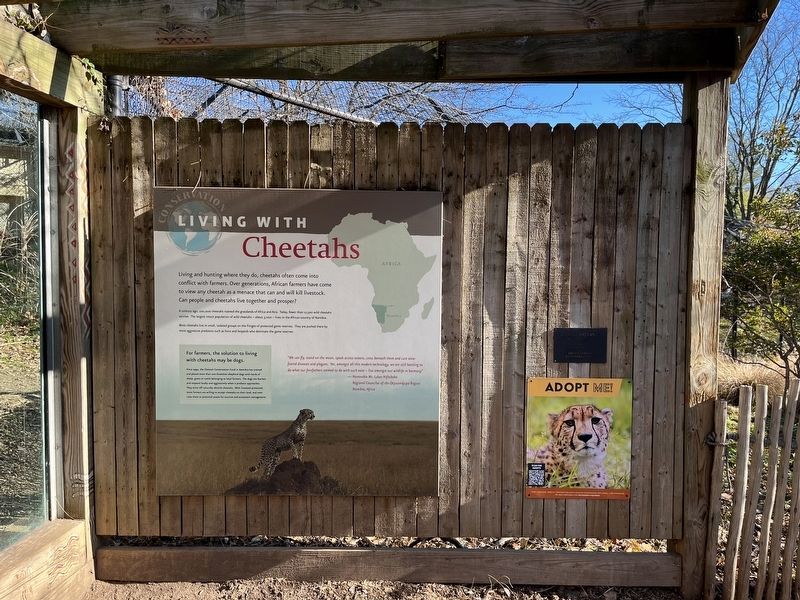Druid Hill Park in Baltimore, Maryland — The American Northeast (Mid-Atlantic)
Living with Cheetahs
Conservation
Living and hunting where they do, cheetahs often come into conflict with farmers. Over generations, African farmers have come to view any cheetahs as a menace that can and will kill livestock. Can people and cheetahs live together and prosper?
A century ago, 100,000 cheetahs roamed the grasslands of Africa and Asia. Today, fewer than 12,500 wild cheetahs survive. The largest intact population of wild cheetahs — about 3,000 — lives in the African country of Namibia.
Most cheetahs live in small, isolated groups on the fringes of protected game reserves. They are pushed there by more aggressive predators such as lions and leopards who dominate the game reserves.
For the farmers, the solution to living with cheetahs may be dogs.
Since 1994, the Cheetah Conservation Fund in Namibia has trained and placed more than 200 Anatolian shepherd dogs with hers of sheep, goats or cattle belonging to local farmers. The dogs are fearless and respond loudly and aggressively when a predator approaches. They drive off naturally skittish cheetahs. With livestock protected, more farmers are willing to accept cheetahs on their land, and even view them as potential assets for tourism and ecosystem management.
"We can fly, stand on the moon, speak across oceans, cross beneath them and cure once-feared diseases and plagues. Yet, amongst all this modern technology, we are still battling to do what our forefathers seemed to do with such ease — live amongst our wildlife in harmony.
— Honorable Mr. Lukas Lifitikeko, Regional Councilor of the Otjozondjupa Region, Namibia, Africa
Topics. This historical marker is listed in these topic lists: Agriculture • Animals • Environment. A significant historical year for this entry is 1994.
Location. 39° 19.498′ N, 76° 38.589′ W. Marker is in Baltimore, Maryland. It is in Druid Hill Park. Marker is on African Journey, 0.2 miles Buffalo Yard Road, on the right when traveling east. Touch for map. Marker is at or near this postal address: 1 African Journey, Baltimore MD 21211, United States of America. Touch for directions.
Other nearby markers. At least 8 other markers are within walking distance of this marker. Tipping the Balance (about 400 feet away, measured in a direct line); Living with Elephants (about 500 feet away); African Savannah Elephant (about 500 feet away); Ghosts of the forest (about 500 feet away); An Innovative Partnership (about 500 feet away); Help from the Zoo (about 500 feet away); Avian Malaria: A Problem with a Pioneering Solution (about 500 feet away); Saving Penguins (about 500 feet away). Touch for a list and map of all markers in Baltimore.
Additional keywords.
Credits. This page was last revised on December 28, 2021. It was originally submitted on December 28, 2021, by Devry Becker Jones of Washington, District of Columbia. This page has been viewed 64 times since then and 9 times this year. Photos: 1, 2. submitted on December 28, 2021, by Devry Becker Jones of Washington, District of Columbia.

